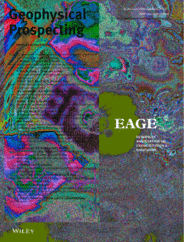-
oa Use of rock‐physics analysis of well logs to determine compaction history of Cretaceous shales in the Rovuma basin, Offshore Mozambique
- Source: Geophysical Prospecting, Volume 69, Issue 6, Jun 2021, p. 1282 - 1294
-
- 22 Jul 2020
- 16 Apr 2021
- 21 May 2021
Abstract
Cretaceous shales from the emerging gas province of the Rovuma basin are examined using well‐log data from two exploration wells. The P‐wave acoustic impedance (AIp) data were estimated, and then brittleness and ductility were assessed within the framework of the Reuss–Voigt limits for acoustic impedance. We then predicted the shale consolidation using a weighting function (Wc) which varies between 0 for the case of grains in suspension (the Reuss limit) and 1 for the case of consolidated rock or cemented shale (the Voigt limit). At the Reuss limit, the formation AIp is highly sensitive to pressure while at the Voigt limit the formation AIp is insensitive to pressure. For the wells in this study, most data plot close to the lower bound with Wc < 0.5, hence showing a significant sensitivity to pressure. Although the Cretaceous shales in the Rovuma basin are dominated by a mechanical compaction regime, some onset of chemical compaction is observed. The rock‐physics analysis showed that the same shale in these two exploration wells had very distinctive and contrasting elastic properties. The deeper well interval clearly shows a ductile shale while the shallower well shows a range of ductile to brittle behaviour matching with the onset of chemical diagenesis at temperatures >58°C. These differences in the development and rate of chemical diagenesis in the same formation are likely due to contrasts in the rate of burial and have important implications for future seismic exploration studies.




